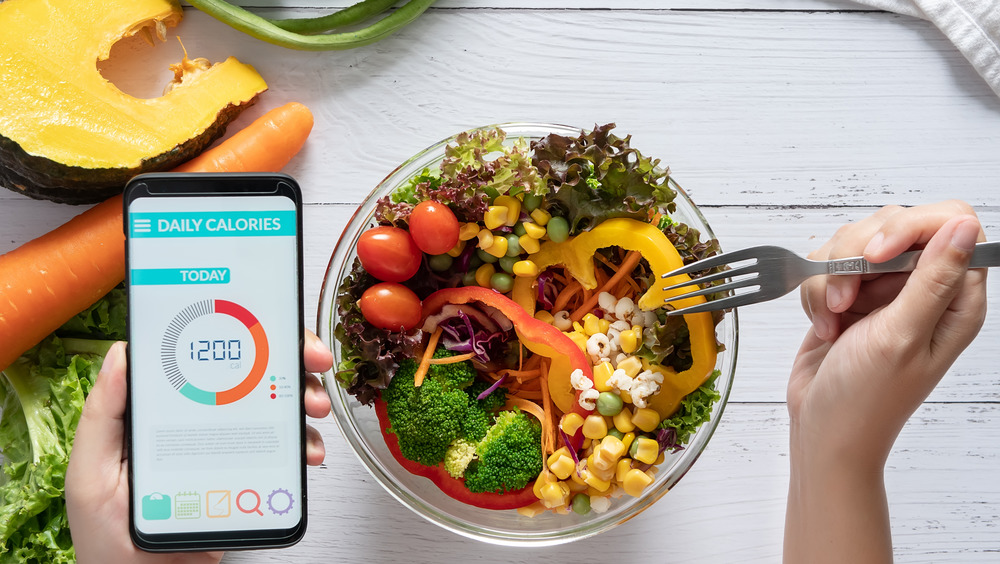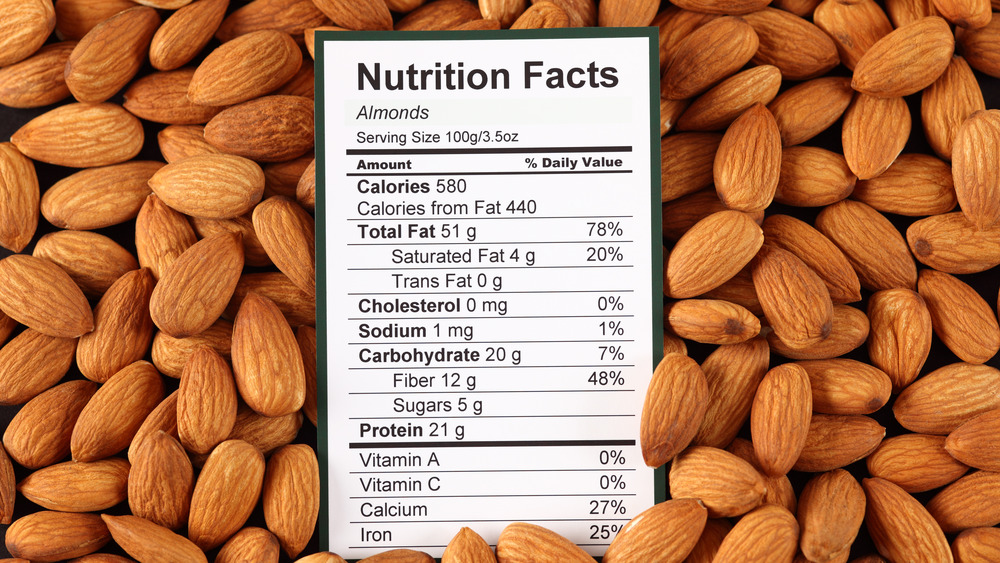The Real Difference Between Calories And Kcals
In the fitness and nutrition world, you may occasionally hear the term "kcals" used instead of "calories" when writing out how much energy a donut contains, or how many calories are burned each mile of a long run. The terms are used interchangeably, but a kcal — kilocalories — is technically not the same thing as a cal — a calorie. Sound confusing? Don't worry, you haven't accidentally been eating more calories than you realized. Here's what you need to know about a kilocalorie versus a calorie.
Unless you're speaking to a physicist about an experiment he's working on, when someone mentions a calorie, they likely are referring to a kilocalorie, which is made up of 1000 "small calories." Small calories, often abbreviated as "cals," are 1/1000 of a kilocalorie (via Healthline). The calories listed on the back of a cereal box are technically kilocalories, or kcals.
In Europe, most packaging actually does list caloric content properly as kilocalories, so don't be shocked if while you're on vacation, you notice that a candy bar has 350 kcals — it means the same as if the candy bar contained 350 calories.
Why do kcals matter?
It's also important to understand what a calorie is, other than a unit that warns us whether or not we should eat that second slice of pizza. Calories, in general, refer to the amount of energy — joules — that are contained in a specific food or are used by your muscles during a workout. The USDA explains that a calorie is actually a measure of heat, specifically the how much heat is needed to raise the temperature of a kilogram of water by one degree Celsius.
A food's caloric content is determined by the amount of energy it contains. Calories or kcals can also help you better understand a food's macronutrient breakdown. Carbohydrates and protein both contain four calories per gram, while fat contains nine, fiber contains 1.5, and alcohol contains seven (via Very Well Fit). That's why a small pat of butter, which is primarily fat, can contain as many calories as an apple, which is a combination of carbohydrates and fiber.


